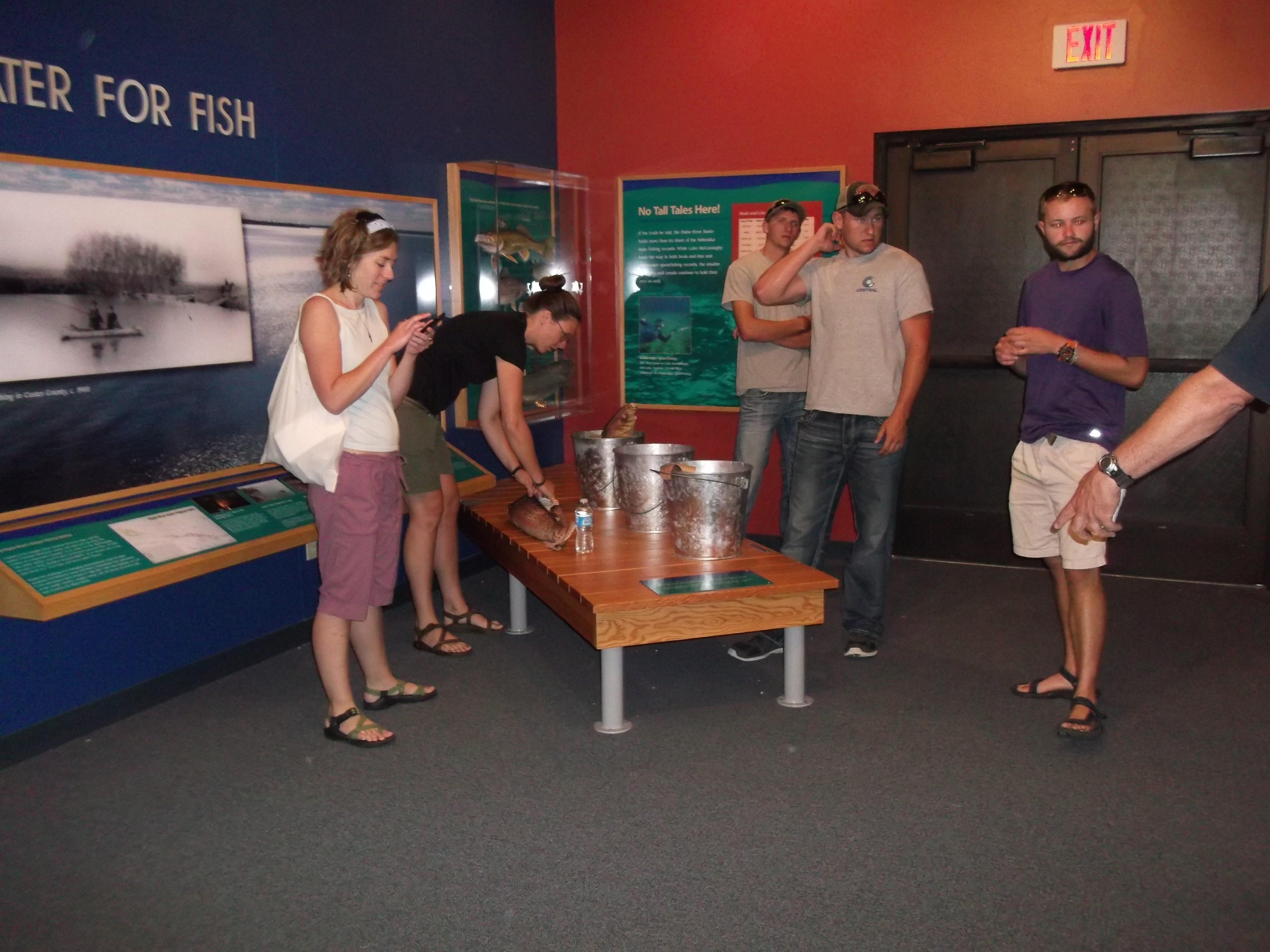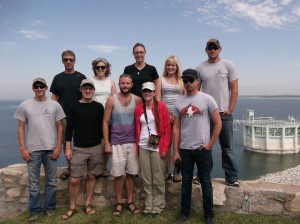Platte Basin Time-lapse & Crane Trust Tour Central’s Project

Central personnel had the opportunity to take an interesting group of people on a tour of the hydro-irrigation project this summer, a group with more than just a passing interest in the Platte River.
Representatives from the Platte Basin Time-lapse Project and the Crane Trust, Inc., spent two days exploring many aspects of Central’s hydro-irrigation project, including parts of the irrigated area, the Jeffrey Island Habitat Area, Johnson Lake, the Gothenburg Control Center, the Jeffrey Hydroplant, Kingsley Dam and Lake McConaughy and the Nebraska Game and Parks Commission’s Lake McConaughy Water Interpretive Center. Central’s two summer employees — college students studying wildlife ecology — who monitored nests established by least terns and piping plovers at Lake McConaughy also participated in the tour.

Representatives of the Platte Basin Time-lapse Project, the Crane Trust and two of Central’s summer employees who monitored nesting by least terns and piping plovers at Lake McConaughy gather for a group picture on the Hilltop above Kingsley Dam.
In 2011, photographer Mike Forsberg and Nebraska Educational Telecommunications (NET) film producer Michael Farrell began a project to examine and document the growing demands of agriculture, municipalities, power generation, recreation and wildlife on the Platte Basin. The Platte Basin Time-lapse Project (PBT) is the result of that effort. The PBT is a private/public partnership with the University of Nebraska-Lincoln and NET, with support from numerous other organizations. By compressing time through time-lapse camera technology, various moments in the river’s processes can be seen in ways normally not perceptible. It also allows viewers to increase their understanding and appreciation of the Platte River and its importance to our region.
About 40 solar-powered time-lapse cameras are currently installed at important locations throughout the Platte Basin. The cameras automatically take one photo every daylight hour of everyday, allowing the capture of a moment in time. When stitched together — days, months, and years go by in minutes — the images provide a unique perspective about the many forces that act upon the river and the dynamics that fit together to shape the river from headwaters to mouth.
PBT staff created an interactive map after the tour that helps explain the hydro-irrigation project and its importance to the State of Nebraska.
The Crane Trust is a non-profit organization devoted to the protection and enhancement of habitats for whooping cranes, sandhill cranes and other migratory birds along the Big Bend Region of the Platte River Valley in Nebraska.
The Crane Trust was formed in 1978 as part of a court-approved settlement of a controversy over the construction of Grayrocks Dam on a tributary of the Platte River in Wyoming. The state of Nebraska and the National Wildlife Federation objected to the project, claiming it would jeopardize irrigation and wildlife downstream in Nebraska. The settlement satisfied requirements of the Endangered Species Act and allowed the Missouri Basin Power Project, owners of Grayrocks, to complete construction. The Crane Trust was funded by a payment from the Missouri Basin Power Project, and income from the endowment is used to finance land acquisition. The Trust is administered by three trustees who are appointed by the three participants in the settlement.
Once on opposite sides of the fence in how Platte River habitat should be managed, Central and the Crane Trust are now working together to ensure that there is enough water to provide all of the benefits – irrigated agriculture, power production, recreation, wildlife habitat, and groundwater recharge — on which Nebraska depends.

Leave a Reply